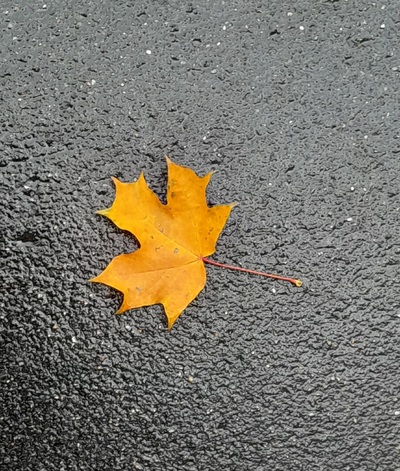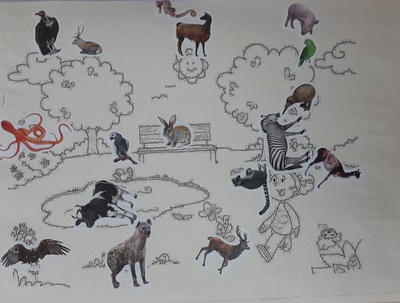
Ingredients
- A colouring picture ‘in the park’. Any will do but I used this particular one because it contained enough detail. Sadly, I cannot find the reference for it.
- A set of stickers. I used animals because that is exactly what I had in my leftover box but it could be anything. We were not aiming at creating a very realistic picture, as you can see in the example.

Procedures
- We introduced and practised the vocabulary featured in the picture. We used the wordwall for that (this one). We drilled the words, we read them, talked about the things we like and don’t like. I also decided to introduce the gestures for each of the words because I wanted to activate this part of my kids’ imagination as our following game involved miming and guessing. One of the children was sitting with their back to the screen, the group were supposed to mime something together for the student to guess. Naturally, we took turns to sit on the big chair. I was invited to particiapate, too!
- We continued practising using the prepositions: with a song, with the YES/NO game and with out toys.
- We sat at our tables, each with a copy of the picture and did a quick run through the picture to familiarize ourselves with all the elements (‘Can you see…?’).
- Every child got a sheet of stickers that I had leftover from other activities, animals from different habitats that I just cut up into pieces, to match the number of children in the group.
- The idea of the game is very simple: the leader directs the group where to put the sticker i.e. ‘Take one sticker and put it on the bench’ (in the tree, under the tree etc). Everyone listens, the teacher monitors and checks.
- The sheets of stickers are passed on in the circle (‘New stickers, please!’) and the game continues.
- The game is led by the teacher for the first few rounds but then the students are asked to take over and to dictate when the stickers as put.
- The game goes on for as long as it is necessary.
Why we like it?
- It was, eventually, a very student-centred and productive activity and we used a lot of the target language (prepositions) and in the format of the Starters YLE Speaking.
- We had a lot of fun. It started quietly and very realistically, with animals on the grass and in the trees, but, as was to be expected, it didn’t last once someone decided to put something on the girl, on the sun, in the air etc. We laughed a lot and kids were very eager to show their pictures and to announce what they put and where.
- Although our main aim were the prepositions, we also revised (and introduced in some cases) the names of the animals as the stickers had all the habitats and I thought it was a nice opportunity to at least try to extend our vocabulary.
- The activity is very easy to prepare and any set of stickers can be used.
- I was really proud of how my kids worked well as a team. Everyone played by the rules, they did not take more than one sticker, they passed on the sheets without delay, they looked at and praised their friends’ pictures.
- I was wondering whether it can be adapted to any types of vocabulary and what I have come up with so far are the following: a picture with a few people or characters and a set of stickers to practise ‘has got’ (‘Choose something for the princess’, ‘The princess has got a cat’) or a picture with characters and practising ‘likes / doesn’t like’ (‘Choose something for the princess’, ‘The princess likes / doesn’t like apples’). I also used the similar ‘recycled stickers’ for a guessing game with older students with the places in the city. The kids had five stickers which they had to put somewhere around the city. They kept the picture secret because the speaking task was about describing the places for their partners to guess. This version could also be adapted to the picture of a house or perhaps even to the map of the world to practise the names of the countries.
- In the picture above, you can see one of the examples, created by my student.
Happy teaching!